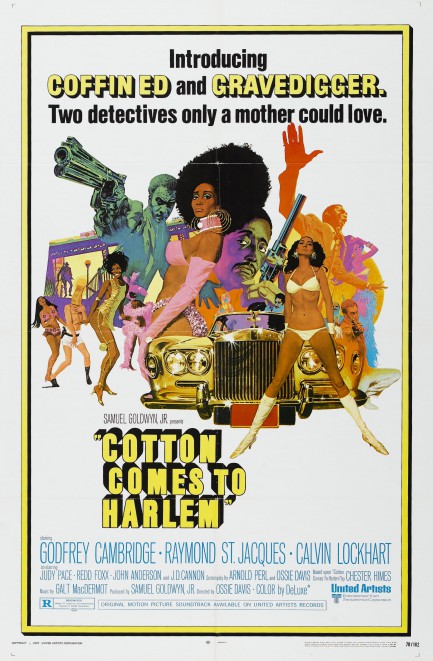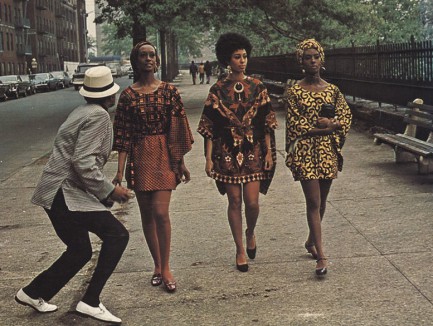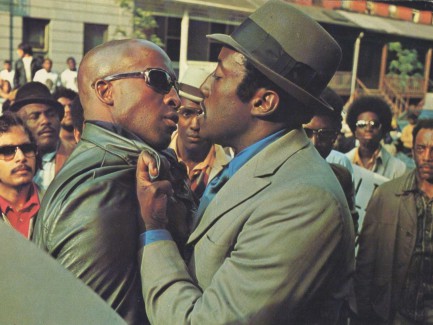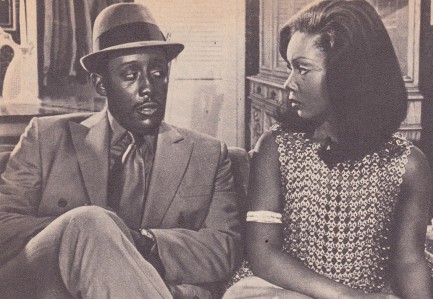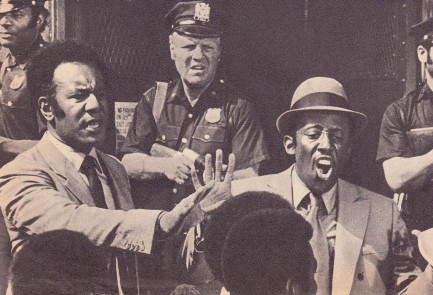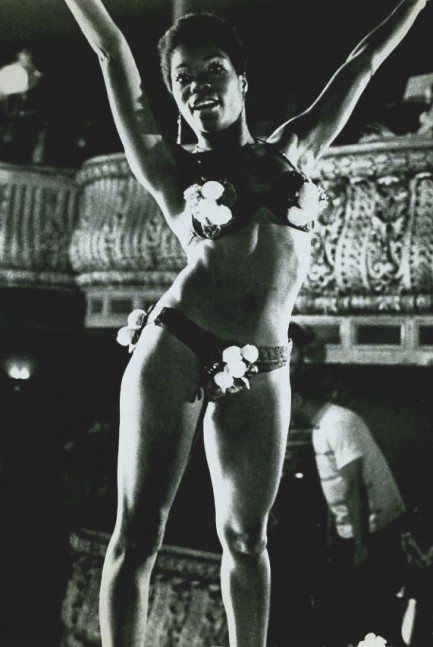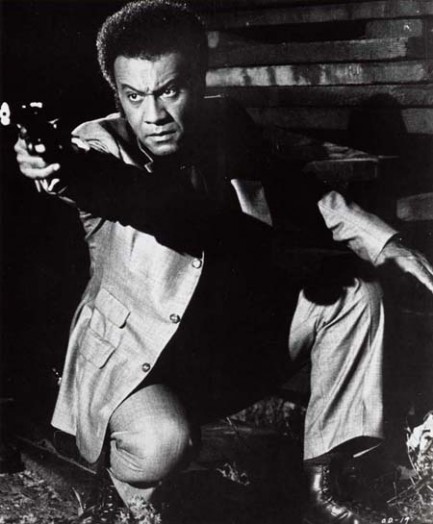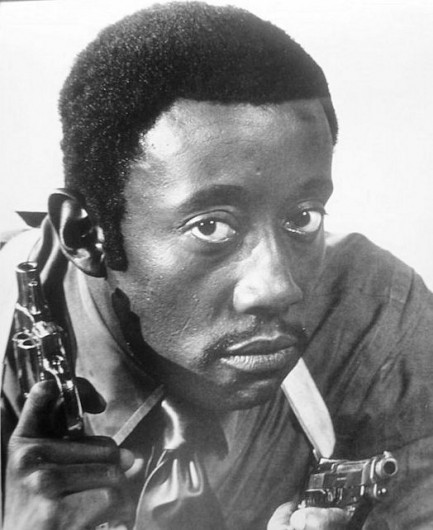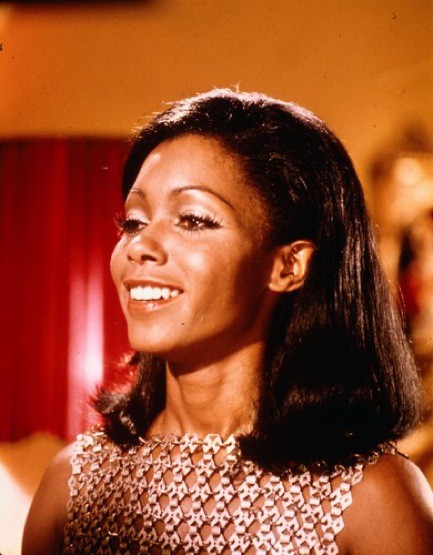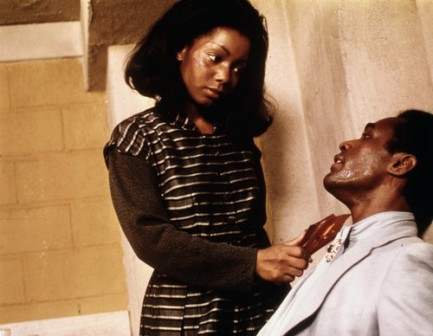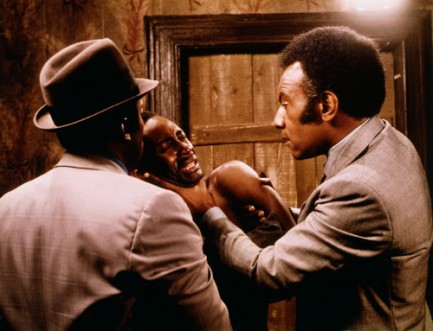 Sometimes you can't win no matter what you do. 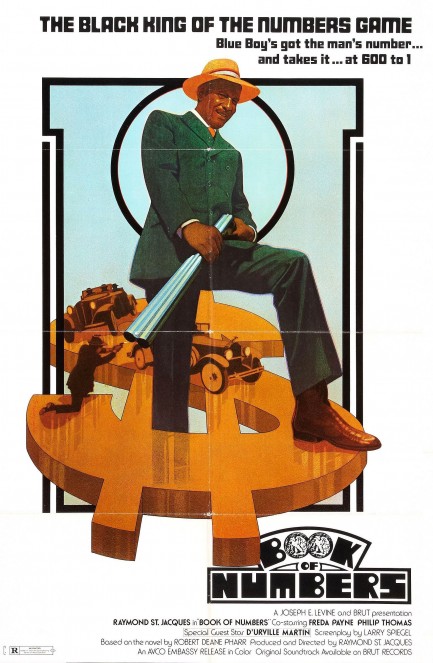
This poster was made for the crime drama Book of Numbers, which premiered in the U.S. today in 1973. The movie falls into the category of blaxploitation, but it's also an ambitious period piece, with a Depression era focus, a deep subtext, and a determination to portray a type of black American life rarely seen onscreen. During the lean years of 1930s a couple of waiters who harbor big dreams ditch food service and hatch a scheme to set up a numbers racket. They roll into El Dorado, Arkansas, get some local help, and soon are making cash faster than they know how to spend it. Their success inevitably attracts the attention of the law, organized crime, and the local Ku Klux Klan. Can the protagonists succeed against all these foes? And what does success look like for black men in the 1930s? No matter how much money they make, they are still not respected, safe, or free.
The movie stars future Miami Vice stud Philip Michael Thomas, along with Raymond St. Jacques, who produced and directed. Their two characters are decades apart in age, and vastly different in how they deal with constant racism. Thomas takes no guff from anyone, even when it costs him; St. Jacques will play any role expected of him by whites in order to survive. This doesn't sit well with the hot-headed Thomas, and leads to growing resentment. In our view, this is the most unique aspect of the film. It implies that because society forces black men to play roles, they can never be truly known by anyone outside their intimate circle. Robert Deane Pharr wrote the source material for this, and it must be an interesting novel, because it spawned a good movie. Book of Numbers is tough, adult, thought-provoking, and historically revealing. We recommend it for 1930s buffs, blaxploitation aficionados, and of course fans of Miami Vice.
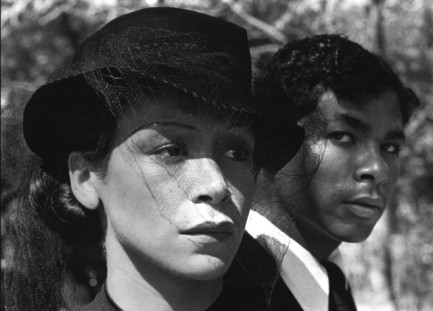 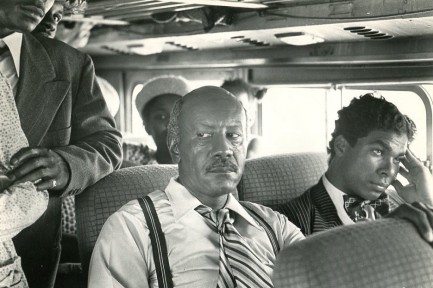 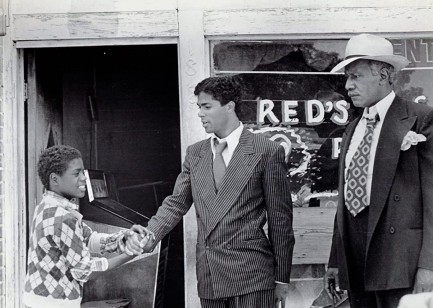 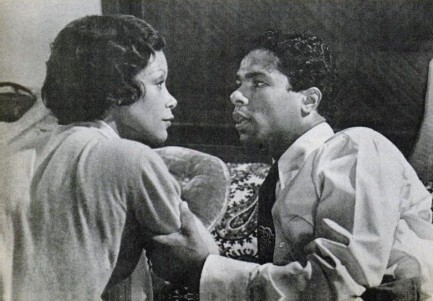 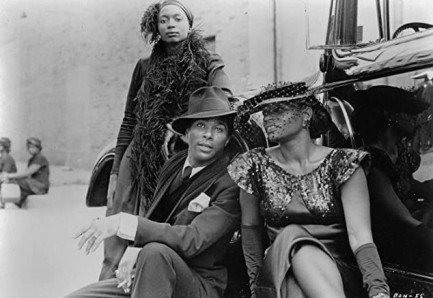
 Life on the edge of a razor. 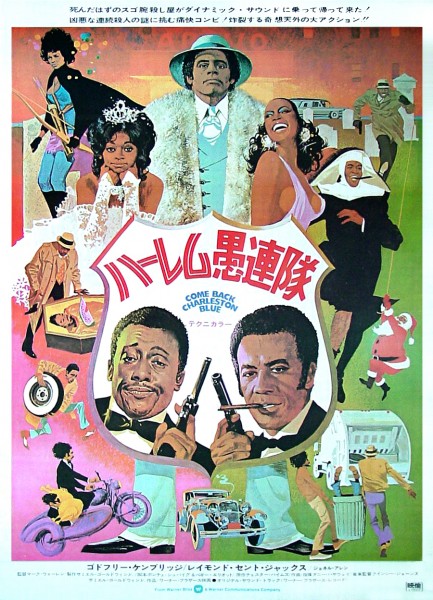
Above is a Japanese poster for the 1972 blaxploitation film Come Back Charleston Blue, starring Godfrey Cambridge and Raymond St. Jacques as the Harlem detectives Gravedigger Jones and Coffin Ed Johnson. It was the sequel to the highly successful Cotton Comes to Harlem. The plot deals with the return of a legendary vigilante named Charleston Blue, who killed with a blue steel straight razor and is believed by some to be responsible for a series of recent slayings aimed at the local drug trade. He's supposed to be dead, but his casket is empty and his collection of razors has gone missing. Is he really back from beyond? You'll have to watch the movie to find out. Reviews were mixed, but there are some thrills and laughs, there's good location filming around Harlem and environs pre-gentrification, and the soundtrack by Quincy Jones and Donny Hathaway is a nice bonus. All-in-all, a middling effort, but certainly not a waste of time. Come Back Charleston Blue first played in Japan today in 1973.
|
 |

The headlines that mattered yesteryear.
2003—Hope Dies
Film legend Bob Hope dies of pneumonia two months after celebrating his 100th birthday. 1945—Churchill Given the Sack
In spite of admiring Winston Churchill as a great wartime leader, Britons elect
Clement Attlee the nation's new prime minister in a sweeping victory for the Labour Party over the Conservatives. 1952—Evita Peron Dies
Eva Duarte de Peron, aka Evita, wife of the president of the Argentine Republic, dies from cancer at age 33. Evita had brought the working classes into a position of political power never witnessed before, but was hated by the nation's powerful military class. She is lain to rest in Milan, Italy in a secret grave under a nun's name, but is eventually returned to Argentina for reburial beside her husband in 1974. 1943—Mussolini Calls It Quits
Italian dictator Benito Mussolini steps down as head of the armed forces and the government. It soon becomes clear that Il Duce did not relinquish power voluntarily, but was forced to resign after former Fascist colleagues turned against him. He is later installed by Germany as leader of the Italian Social Republic in the north of the country, but is killed by partisans in 1945.
|

|
|

It's easy. We have an uploader that makes it a snap. Use it to submit your art, text, header, and subhead. Your post can be funny, serious, or anything in between, as long as it's vintage pulp. You'll get a byline and experience the fleeting pride of free authorship. We'll edit your post for typos, but the rest is up to you. Click here to give us your best shot.

|
|










